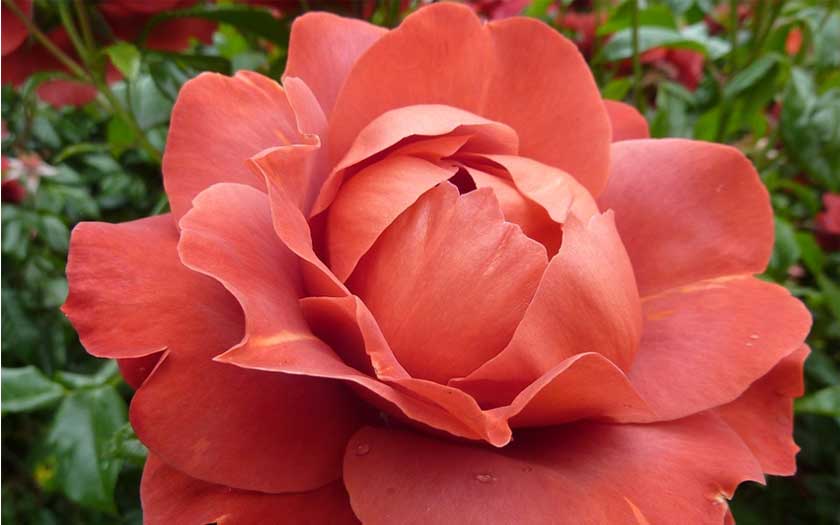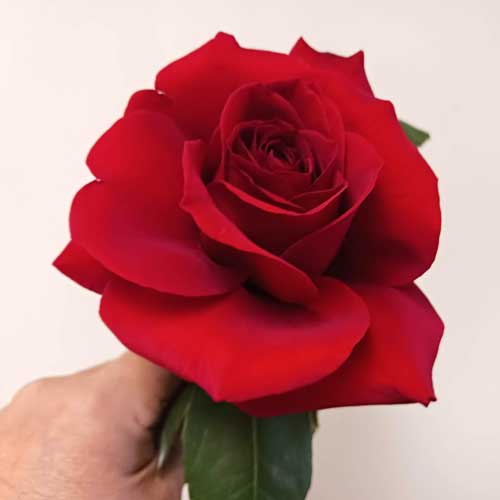Last Updated on February 9, 2023
Looking to add a "wow" factor to your floral designs? This video tip will show you how reflexing flowers will do just that. Watch and see.

Reflexing Flowers – Here’s How To Do It The Right Way
Not familiar with reflexing flowers? It’s a simple technique that professional floral designers have used for years but has recently seen a resurgence in popularity, thanks to the many wedding bouquet pics posted on social media.
Knowing how to properly reflex roses, for example, can quickly turn them into larger and fuller-looking blooms. Reflexing tulips will transform them into an entirely different shape.
This short video shares this simple floral technique you can add to your floral design arsenal.
Try adding a few reflexed blooms if you’re looking for easy ideas to make your floral designs stand out.
Take a look.
I hope you liked the video and want to try reflexing a few flower petals yourself.
Reflexing Roses
As the video showed, when reflexing a rose, start by working from the outer petals toward the center of the bloom, gently turning each rose petal back. Continue until the rose achieves the look you want.
Remember that the roses should be at room temperature, so you don’t damage them.
The same steps apply to any flower you reflex.
Why I Use Reflexed Flowers In My Floral Designs
First off, reflexing flowers is not a newfound floral design technique. It’s been around for years.
It’s practical and profitable to use because of the visual appeal and high-value look it adds to floral designs. Reflexing can also lower the cost of an arrangement or bouquet by reducing the number of flowers you need.
The downside is that it’s time-consuming, especially when reflexing a lot of flowers. The time it takes adds to the cost of the flower arrangement.
I use it selectively, adding reflexed roses or other blooms in wedding bouquets, corsages, and boutonnieres only when needed.
I’ve made a reflexed rose bouquet or two for customers who requested them, but I rarely reflex every rose in an arrangement. In my opinion, it doesn’t look natural.
For example, it’s perfect when I need a few larger roses to use as focal flowers in wedding bouquets.
Quick Tip: Consumer bunches of shorter-stemmed roses (40cm – 50cm), often referred to as “supermarket flowers”, have a smaller bloom. Reflexing several roses adds a “WOW” factor at no additional cost.

Reflexing tulip petals allow me to turn them into a unique-looking bloom, showcasing them as a unique, stand-alone flower.
How Long Do Reflexed Flowers Last?
Every flower’s vase life depends on proper flower care and handling. While some flowers may only last a few days, some may last two weeks or longer.
Reflexing is a floral design technique. It does not affect a flower’s vase life.
What Are The Best Flowers To Reflex?
Although you will probably reflex roses and tulips most often, you can also reflex other fresh-cut flowers. I’ve reflexed cymbidium orchids, alstroemeria, and oriental lilies as well.
It’s an easy floral design trick that can have quite an impact.
Do You Enjoy Learning About Floral Techniques Like This? Want More?
Then stay informed by subscribing. I’ll send updates whenever I post new videos. I’ll never bombard you with promotional emails. I only send new post notifications.
If this sounds like a winner, then please join me right here.
We will only use your information to send you our blog updates. You can change your mind anytime by clicking the unsubscribe link at the bottom of any email you receive from us. You can find details about our privacy practices here.
If you’re not interested, that’s okay too. You can still stay up-to-date by following me on social media.
Also, I enjoy hearing what my visitors think of the content I share here. If you’ve got something on your mind, let’s continue the conversation on social media.
Til next time,


